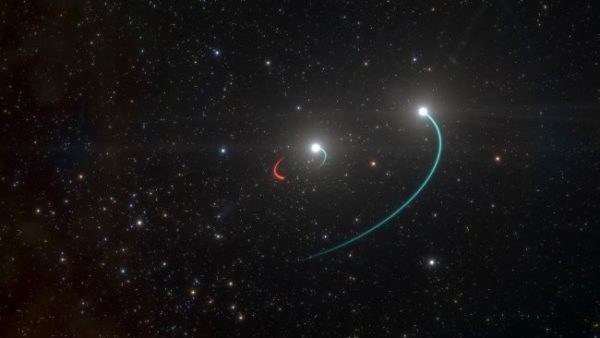A newfound black hole may be the closest black hole to Earth, and you can spot its cosmic home in the night sky without a telescope.
The black hole, which is lurking 1,000 light-years from Earth in the southern constellation of Telescopium, belongs to a system with two companion stars that are bright enough to observe with the naked eye. But you won’t be able to see the black hole itself; the massive object has such a strong gravitational pull that nothing — not even light — can escape it.
Astronomers discovered this black hole while studying what they thought was just a binary star system, or two stars that orbit a common center of mass. They were using the MPG/ESO 2.2-meter telescope at the La Silla Observatory in Chile to observe the binary, known as HR 6819, as part of a broader study on double star systems. When they analyzed their observations, the researchers were shocked to learn that a third object was hiding in the system: a black hole.
Although the astronomers could not directly observe the black hole, they were able to infer its presence based on its gravitational interactions with the other two objects in the system. By observing the system for several months, they were able to map out the stars’ orbits and figure out that another massive, unseen object must be acting in the system.



